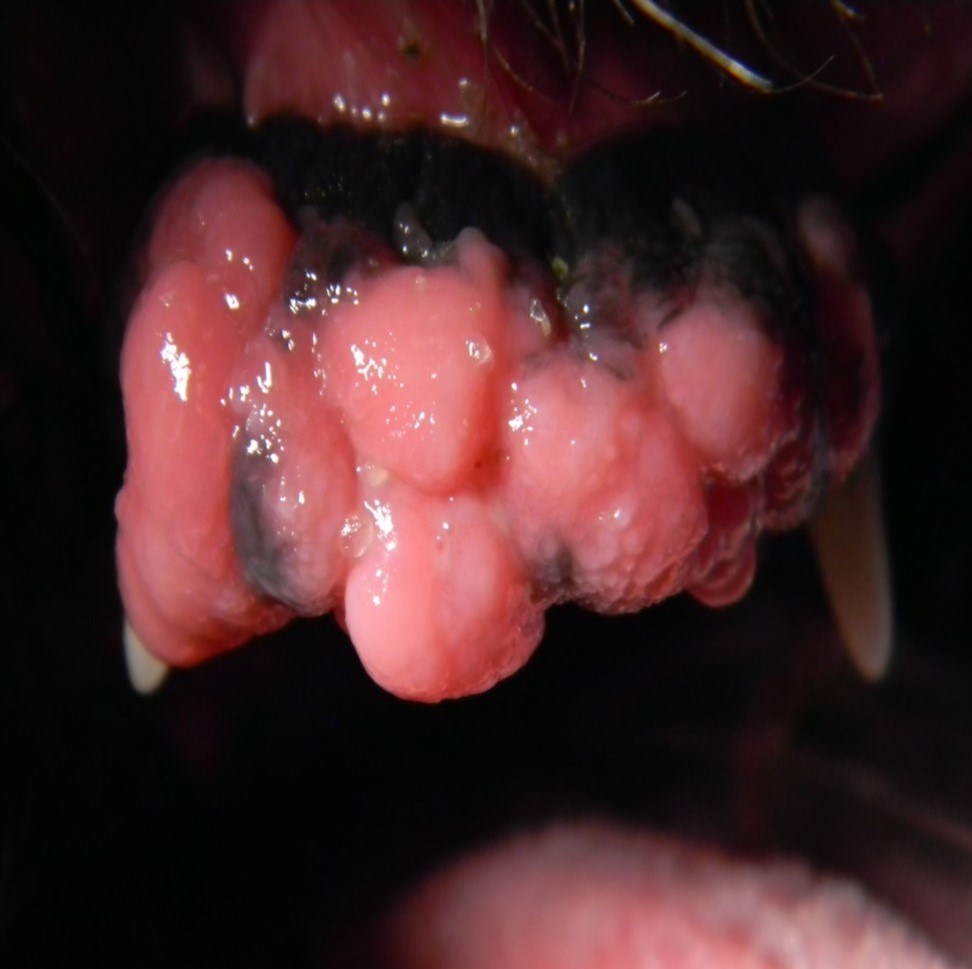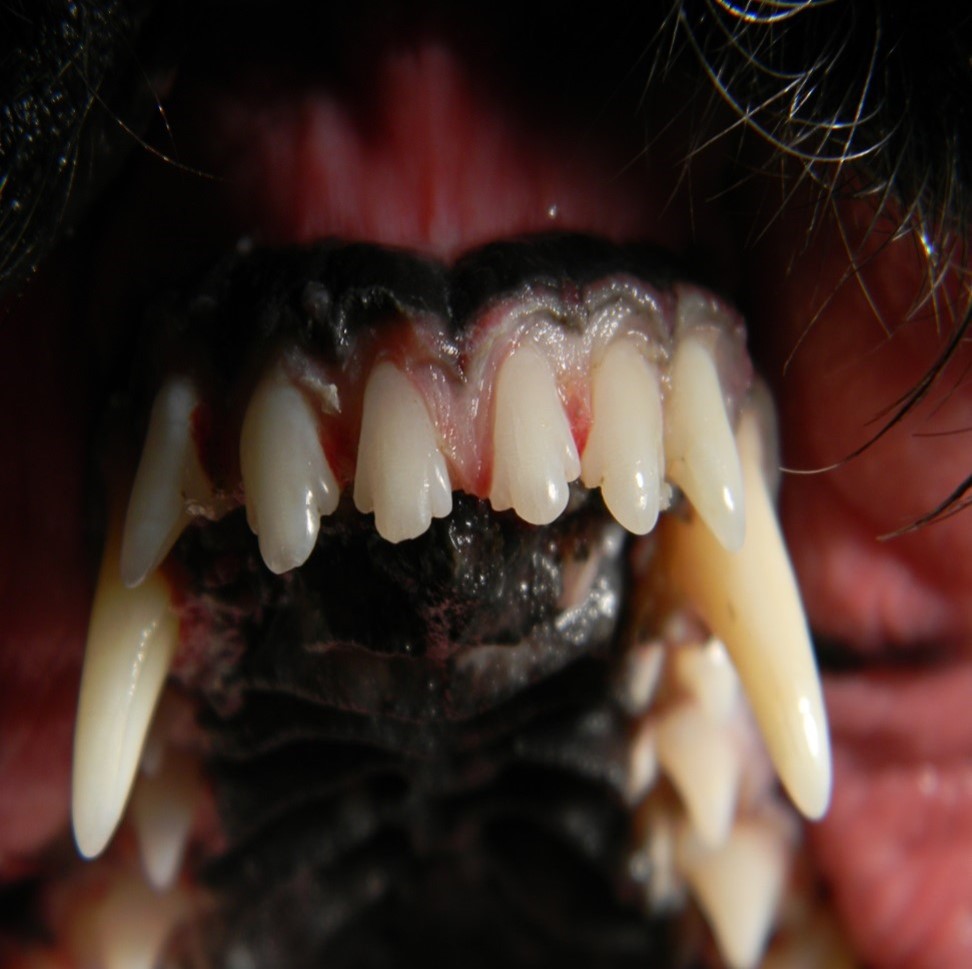
Periodontics
It is fact that 80% of your four-legged friends will have some degree of periodontal disease by the time they are two years old. The periodontium is the supporting structures of the teeth. In severe periodontal disease, important teeth can be lost. The loss of these teeth can adversely alter your pet’s life.
It is our goal to do the best we can to save these teeth by performing such procedures as root planing, gingival (gum) surgery, guided tissue regeneration and, of course, professional dental cleaning and polishing.
Periodontal Disease and Treatment
It is a scientific fact that pets feel the same sensations of pain as humans. The difference is how that painful response is exhibited. We humans (especially males) will whine and seek help. Our pets do not whine and seek help even though they are in severe pain.
It has been suggested to imagine how you would feel with the same condition, that is how your pet feels. Periodontal disease rarely makes a pet quit eating.
Periodontal disease is found under the gumline therefore, the proper diagnosis of periodontal disease requires four things:

• General anesthesia (even when asked, pets will not hold still, tilt their head and keep their mouths open)
• Dental x-rays (recall that 70% of the teeth are below the gumline)
• Dental probing (we probe the teeth and gums just like your dentist does)
• Magnification
Periodontal disease is caused by a bacterial infection under the gumline. It often causes halitosis (bad breath). Treatment may include cleaning the affected areas, application of a perioceutic (antibiotic) to the areas of disease, trimming gum tissue, gum surgery and bone grafting.
Small problems can lead to big problems; therefore, it is crucial that our beloved four-legged friends undergo regular oral exams to identify and eliminate problems.
Gingival Hyperplasia
Gingival refers to the gums. Hyperplasia refers to too much growth. Some breeds such as Boxers and others have a genetic predisposition to grow excess gum tissue. In some cases, the gum tissue can cover the entire crown of the tooth. Certain medications can cause the same condition.
The overgrowth of gum tissue traps bacteria leading to periodontal disease. Gingival hyperplasia is treated by trimming away the excessive gum tissue. Admittedly this sounds painful, however, the numbing agents at our disposal make this procedure relatively pain-free and can certainly save teeth.

